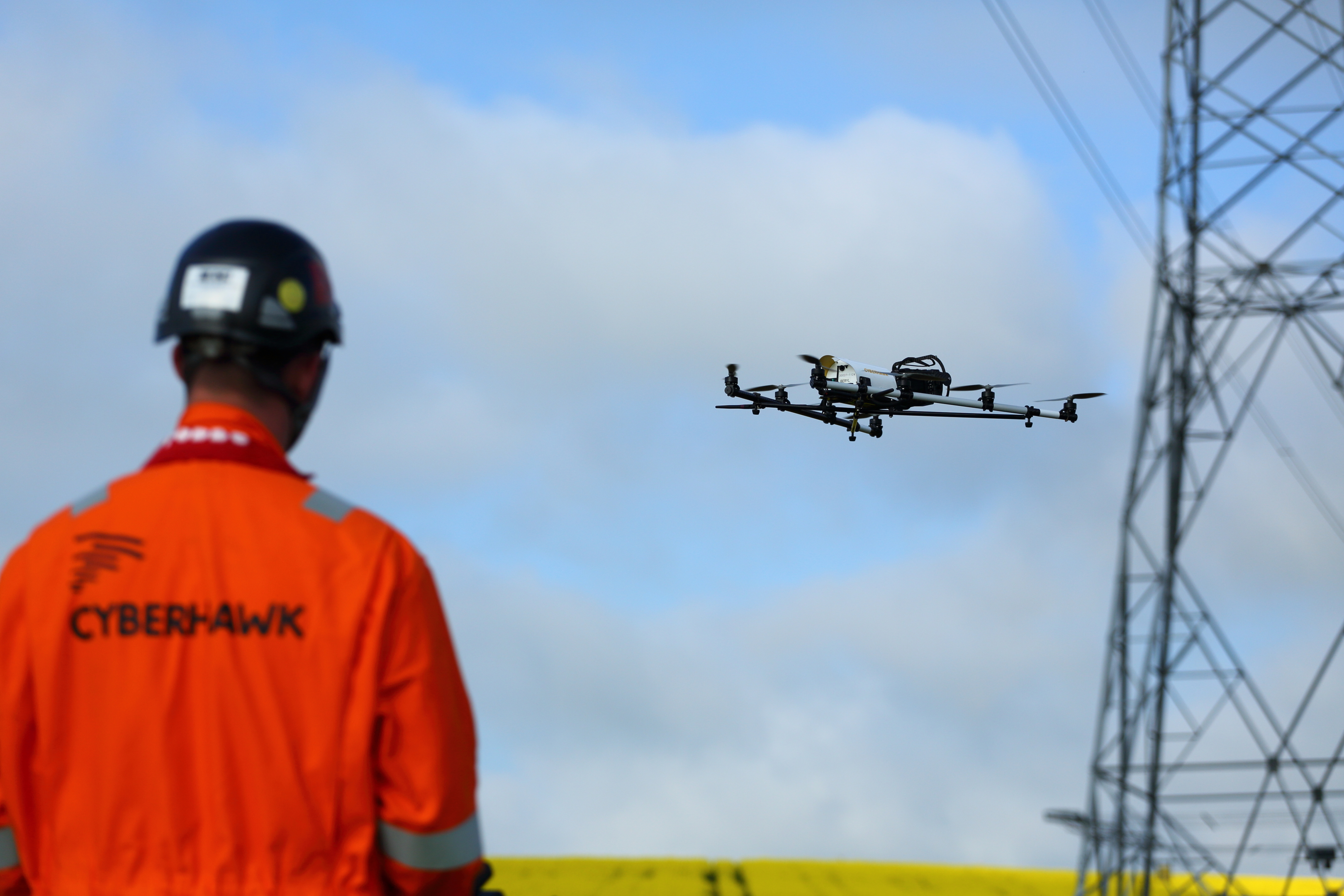
The Offshore Renewable Energy (ORE) Catapult and Swedish wind developer Vattenfall have agreed a three-year extension to their partnership at Aberdeen Offshore Wind Farm.
The testing and demonstration collaboration began at the 96.8MW offshore wind facility, also known as the European Offshore Wind Deployment Centre, in 2019.
In that time, ORE Catapult and Vattenfall have collaborated to test technologies which address operation and maintenance challenges faced by offshore wind farms.
These include blade repair, leading edge erosion, robotics, remote cable monitoring and remote and autonomous inspection.
The partnership at the 11-turbine wind farm, located 1.5 miles off the Aberdeen coast, will now last until the end of 2026.
Unique offshore wind test site
ORE Catapult regional partnership manager Hugh Riddell said extending the Aberdeen offshore wind farm collaboration with Vattenfall will give innovative UK companies a unique opportunity to test their technology in a real-world environment.
“The UK is internationally recognised for technological innovation, but there is a need to fast track the commercialisation of these technologies and boost supply chain opportunities in the years to come,” Mr Riddell said.
“De-risking their innovations on an operating offshore wind farm in the north east of Scotland, which is already home to so many innovative engineering companies, will help to accelerate routes to market, increase confidence for potential customers, and further support the growth of offshore wind as part of the race to Net Zero.”
Vattenfall UK country manager Lisa Christie said the collaboration with ORE Catapult is “absolutely vital”.
“We’re supporting technologies needed to promote a competitive offshore wind industry, strengthen the supply chain, and bring economic benefits to the UK,” Ms Christie said.
“What we offer companies is a world class testing and demonstration facility.
“Technologies must meet the highest requirements – delivering increased safety in offshore wind operations, minimising impact on the environment, and reducing costs of renewable energy.”
Innovative offshore technology
Dutch firm Fugro conducted the world’s first fully remote inspection of offshore wind farm assets at the facility last year.
Fugro director for uncrewed surface vessels (USV) and remote working Nick Simmons said the test was a “landmark moment” for offshore wind operations.
“Being able to test innovations like this at the Aberdeen Offshore Windfarm allows us to prove to the industry that the technology not only works but has the ability to completely transform offshore operations going forward,” Mr Simmons said.
Other innovations which have been tested at the Aberdeen offshore wind farm include an offshore rescue recovery system and the world’s first in-turbine toilets, installed by Pegasus Welfare Solutions (PWS).
OEG Offshore acquired PWS in 2021, and OEG Renewables business development manager Faye McFarlane installing the toilet units had been an important step forward for the welfare and safety of personnel offshore.
“Having the option to use a toilet inside the turbine reduces the number of vessel transfers for comfort breaks which, in turn, also increases productivity as less time is wasted with multiple transfers,” Ms McFarlane said.
“By allowing for personal privacy these in tower toilets help to increase diversity in offshore wind.”
Offshore wind drone inspections
Another company to test its technology at the site is Edinburgh-based drone inspection company Cyberhawk.
Cyberhawk utilities and renewables lead Euan Baird said having a test site is vital for companies to validate their technology.
“While we knew the technology was effective onshore, there are so many new variables and challenges in the offshore environment from the size of the turbines to the movement of the vessel, which are impossible to replicate in onshore testing,” Mr Baird said.
“For Cyberhawk, having the facilities to get hands-on with the technology and validate its performance offshore was extremely valuable.”
Other companies to conduct test demonstrations at the facility include Synaptec, which retrofitted passive fibre optic sensors to the wind farm for live cable monitoring, and Miros Wave Radar, which deployed a prototype wave radar and a fusion sensor.
ORE Catapult said future projects at the Aberdeen offshore wind farm will be looking at technology innovation in the areas of robotics and sustainable solutions.
In addition to its role as a test facility, the wind farm generates enough energy to offset an average 134,000 tonnes of CO2 and meets the power needs of 80,000 UK households.
While Vattenfall had also planned to produce green hydrogen from the Aberdeen wind farm, the Swedish state-owned firm scrapped the HT1 trial earlier this year.
Recommended for you

 © P&J
© P&J © Supplied by Fugro
© Supplied by Fugro
